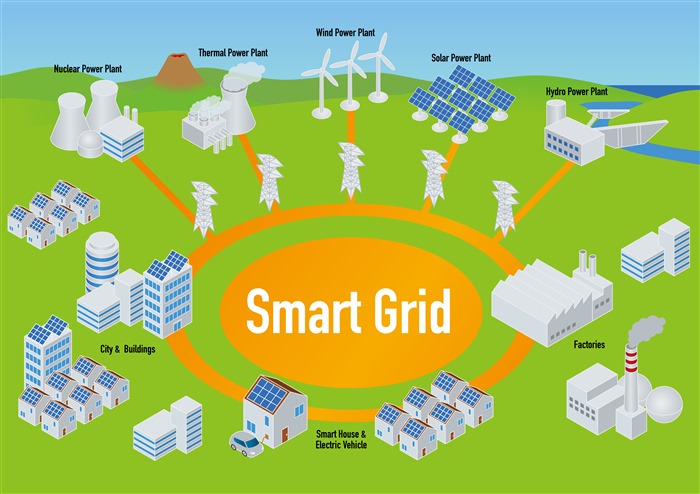SSZTC10 october 2015 AM5716 , AM5718 , AM5726 , AM5728
The smart grid and energy industries are continuously getting more efficient, and with these efficiencies come specific processor needs. Embedded processing puts the “smart” in smart grid, as power distribution is monitored and controlled using more logic than ever before. In the current era of technology change known as Industry 4.0, TI’s AM57x processors are the most fitting processor to meet the needs of smart grid applications due to its robust combination of cores. The new processors are a flexible embedded solution that are an ideal fit for many smart grid and energy applications such as protection relays, substation Ethernet switches, substation gateways, and substation controllers (RTUs). Substation automation is at the very center of the smart grid industry and AM57x processors are ideally suited for design engineers that face challenges specific to the substation because of the very cores and peripherals available on the chip. Now we’re going to dive into some of these peripherals and the benefits they possess.

Protection relays are now smarter than ever, and digital signal processors (DSPs) are known to be great for analytics. In the case of this device, C66x DSP cores are used to quickly crunch the high volumes of sampled values data that comes in to each relay. The ARM® Cortex®-A15 can be used for all of the application logic for a protection relay. The two PRU-ICSSs, which provide up to four ports of 10/100 Ethernet, are ideal for integrating redundancy and industrial protocol capabilities into the product. The PRU-ICSS cores are programmable, deterministic, real-time cores with dedicated interfaces. These cores are C programmable and can be used to emulate legacy interfaces, providing backward compatibility to devices already installed in the field.
A substation controller, or automation gateway, is generally the centerpiece of the monitoring and automation of a substation. While newer protective relays are incorporating increasing amounts of logic, substation controllers are also seeing an increasing amount of logic that may require the performance of an ARM Cortex-A15 core. Using a processor equipped with a variety of peripherals give developers access to more phasor monitoring, control, and data crunching at the protective relay, and so that a clean, calculated value is forwarded to the substation controller. As the bridge between the protection relays and the human operator-run control rooms, the substation controller aggregates, filters, and sorts data of the various protection relays and is able to passes this information efficiently to the utility back office, or control room. The ARM Cortex-A15 cores are well-suited for these aggregation and filtering tasks, and can allow for higher level tasks, such as fault recording and data logging, to be done on substation controllers or gateways. PRU-ICSS cores are essential for the application specific tasks and the backplane communication that are predominant in today’s substation controllers.
Smart grid Ethernet switches are an additional end equipment in the market that can benefit from a fully-loaded SoC. TI’s unique PRU-ICSS subsystems are well-suited for any switch that will handle industrial communication protocols due to their ability to support multiple protocols on the same hardware, with only a firmware change required to change from protocol to protocol. With two Ethernet ports from a SoC-based switch, and four ports for industrial specific protocols through the PRU-ICSS, developers are given six lanes total without requiring external hardware. Some substation architectures place more data-sorting and filtering applications in the Ethernet switch, while others prefer to use the substation gateway or controller for these functions. Either way, the -embedded processors can provide the necessary processing power for sorting and filtering large volumes of data traffic, which are becoming increasingly required in smart grid infrastructure applications.
This fast-paced, innovative industry will continue to strive for efficiency, which will be driven in large part by embedded processing. Integration, communication, analytics, high-reliability, and real-time control are all recurring requirements across the industry, thus making the new line of embedded processors, with advanced peripherals and scalability, the perfect choice for smart grid designers.
Come back and see us next week as we discuss additional industrial applications that the AM57x processors can assist developers in.